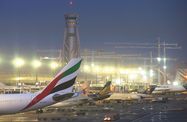An increase in the liquids storage, bunkering and freight-handling capacity at the Port of Fujairah is expected to further strengthen the emirate’s position as a fuelling point and trans-shipment centre.

In late April the UAE-based Brooge Petroleum and Gas Investment Company (BPGIC) announced plans to more than double its holding capacity of crude and oil products at its storage terminal, located close to the port.
The expansion will see 600,000 cu metres of new storage capacity added to BPGIC’s Fujairah terminal, up from existing levels of 400,000 cu metres, with work to be completed by the end of 2019.
The development of the BPGIC facility comes on the back of numerous major investments in refining capacity in the Middle East in recent years, with regional oil majors looking to diversify revenue sources and react to strong growth in Asian demand for oil products. Both China and India are expected to see deficits in domestic oil product supply by 2025, according to a statement made by consultancy McKinsey in February.
Strategically located on the east coast of the UAE and at the entrance to the Strait of Hormuz, Fujairah is well situated to take advantage of any increased shipping activity, particularly as it is also a well-established refuelling point for tankers leaving the Gulf, with vessels that choose to port there and not enter the Strait of Hormuz enjoying lower insurance costs.
Meeting broader goals for port capacity
Abu Dhabi Ports (ADP), which took over management of the facility in September 2017 via a 35-year concession agreement, is also looking to leverage the port’s potential.
Establishing a new unit, Fujairah Terminals, to run operations at the site, ADP has committed to expanding freight-handling capacity. Its plans include adding 1000 metres of quays, expanding storage space by 300,000 sq metres and deepening existing berths to 16.5 metres, allowing for the docking of larger vessels.
The additional capacity – including the installation of advanced cargo-lifting equipment, such as post-Panamax quay cranes able to move freight from new generation container carriers – should be brought on-line by 2021.
One of the first steps in this programme was taken in mid-December 2017, when ADP signed contracts worth Dh500m ($131.6m) for preliminary work to facilitate development of the port.
Fujairah already has nine operational berths with the capacity to handle general cargo, container traffic, and wet and dry bulk, with annual throughput to be increased gradually to 700,000 tonnes of freight and 1m twenty-foot equivalent units of containers by 2030.
Storage growth continues as bunkering drop offs
In recent years the port has witnessed exponential growth in storage capacity, which has risen from 3m cu metres in 2010 to 10m cu metres today, with the goal to increase this to 14m by 2021.
The increase also coincides with efforts to transform the port from being a basic logistics hub to a major centre for oil trading in the region.
Recent figures from the Fujairah Oil Industry Zone, an energy free zone established at the port in 2011, also point to strong inventory growth in recent times: as of mid-June, oil products stood at 19.3m barrels, representing 6.5% week-on-week growth, with heavy distillate inventories at their highest level for 2018.
Of the total, 6.9m barrels contained light distillates, 2.7m carried middle distillates and 9.7m were barrels of heavy distillate.
Despite these positive indications, Fujairah’s position as the world’s second-largest bunkering port was taken by Rotterdam last year, while Singapore remains the global leader.
With the UAE banning Qatari or Qatar-bound vessels from using its maritime facilities last year, bunkering demand eased and loading volume fell to between 8m and 9m tonnes, down from 11m-12m tonnes in 2016.
Nonetheless, industry figures are confident that increased container and freight-handling capacity at the port will accelerate growth and reduce costs in other areas, particularly for businesses working in the nearby Fujairah Free Zone.


